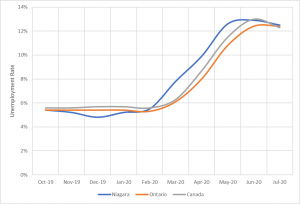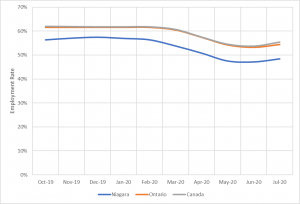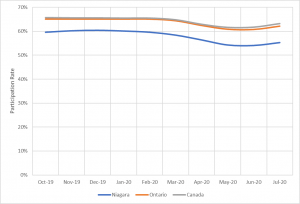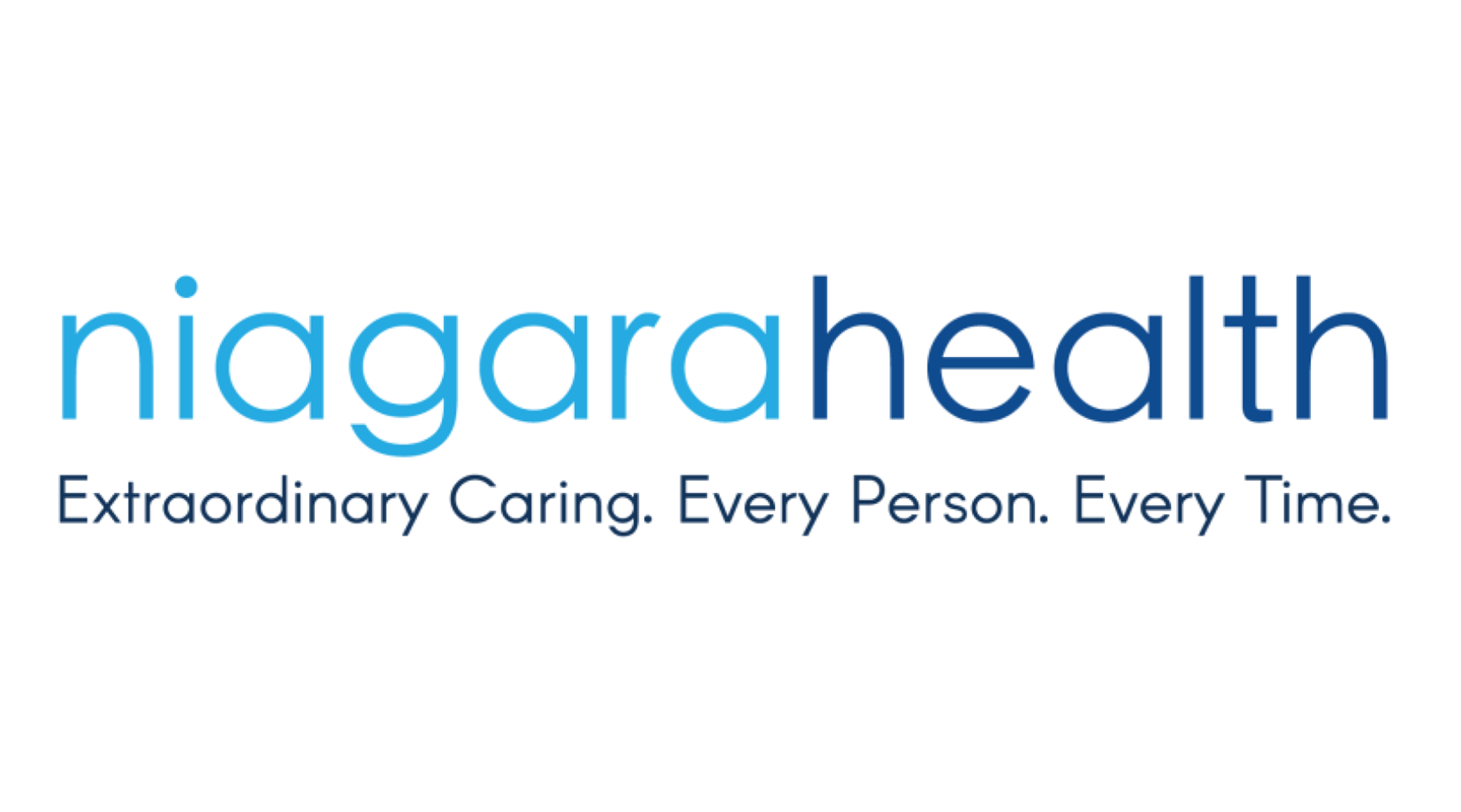
Vital updates:
- The Canada Revenue Agency has updated its Canada Emergency Wage Subsidy (CEWS) calculator, with a downloadable Excel spreadsheet also available. The resource allows users to determine the amounts they will need to enter when you complete your separate online application form, preview the amount of subsidy they may receive, print their results, and save them to validate their claim. The CEWS program has recently been revised and businesses that have not recalculated since the July 23rd legislative changes were enacted are advised to revisit their applications.
- The Government of Canada today announced the creation of the Surplus Food Rescue Program, a a $50 million initiative which will help to support Canada’s food system, food processors, food producers and distributors. The impacts of COVID-19 have resulted in the disruptions to areas of Canada’s food system, as it forced the near closure of the restaurant and hospitality industry in Canada and the United States. Some producers across Canada are left with surpluses of quality food, while increased demand from grocery stores alone is not expected to clear the inventory before it spoils. Another impact of the pandemic is an increase in demand for food from food banks and other food security organizations in communities across Canada. The Surplus Food Rescue Program aims to help address these imbalances by providing new funding for the repurposing and redistribution of surplus food to vulnerable Canadians. Further details of approved projects and funding can be found here.
- The Government of Canada also announced the new Canada Healthy Communities Initiative, which will provide up to $31 million in federal funding to support community-led solutions that respond to immediate and ongoing needs arising from COVID-19 over the next two years. The Initiative will fund smaller-scale local projects under three main themes: creating safe and vibrant public spaces, improving mobility options, and digital solutions. The goal is to fund projects that quickly help communities, including rural and remote communities, adapt to the new reality of COVID-19. Potential projects could include: expanding outdoor seating on our main streets, remodeling a playground to allow for proper physical distancing, building multi-modal paths that would allow bikes, scooters, and personal mobility devices to share space with pedestrians and cars, or creating digital apps to allow residents to access municipal services remotely.
- Niagara Falls City Council voted unanimously to support of the Niagara Region’s application to join the Coalition of Inclusive Municipalities (CIM), joining the municipalities of St. Catharines, Thorold, Pelham, Port Colborne, Welland, Lincoln and West Lincoln. The initiative supports diversity and inclusivity, aims to address systemic and structural racism in the Niagara community, and stresses the importance of taking concrete steps to ensure that both the community and the municipal corporation are as welcoming and inclusive as possible to all residents. The GNCC had requested that all of Niagara’s municipalities join the CIM in its 2018 municipal election platform, recognizing that Niagara will need to attract skilled workers and entrepreneurs from all parts of the country and the world to strengthen its economy, and that those people will only come to communities where they feel welcomed and included. The Niagara Falls CAO’s report can be read here (PDF link).
Reading recommendations:
- Lawn chairs and kitchen tables: Ergonomics in the involuntary work-from-home era, Sean Gallagher, Ars Technica
- Recent Grads Are Drowning in Uncertainty. Here’s How to Stay Afloat, Meg Jay, Harvard Business Review
- Canada’s mortgage ‘stress test’ level falls for 3rd time since pandemic began, Pete Evans, CBC News
If you are showing symptoms, contact your health care provider, call the Public Health Info-Line at 905-688-8248, or chat to Public Health online. For testing, call 905-378-4647 ext. 42819 (4-CV19) for information on test centres in Niagara and to book an appointment.
Remember that a COVID-19 test is only a snapshot of your health on the specific date and time the swab was taken. No testing is perfect and a negative result doesn’t mean you haven’t been exposed to COVID-19. You can still develop symptoms days after your test was taken.
It is important that everyone practice physical distancing to prevent the spread of COVID-19. Maintain a 2-metre distance from other people. When maintaining distance is impossible, wear a mask or face covering. Wash hands frequently and thoroughly. Avoid touching the face. If you have recently traveled outside the country, you are legally required to self-isolate for 14 days.
Previous updates can be accessed here.
Stay safe and be vigilant. The GNCC is here to support you. Contact us with any questions you have.




 In July, under one-quarter (22.4%) of the potential labour force was fully or partially underutilized. This was down notably from more than one-third in April (36.1%), but substantially higher than pre-pandemic levels (11.2% in February). Labour underutilization occurs when people who could potentially work are not working or when people could work more hours than they are currently.
In July, under one-quarter (22.4%) of the potential labour force was fully or partially underutilized. This was down notably from more than one-third in April (36.1%), but substantially higher than pre-pandemic levels (11.2% in February). Labour underutilization occurs when people who could potentially work are not working or when people could work more hours than they are currently. In July, as the continued easing of COVID
In July, as the continued easing of COVID